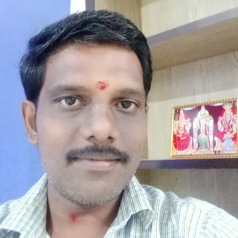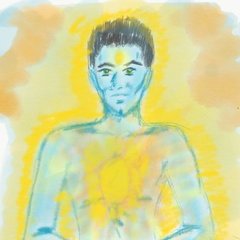Search the Community
Showing results for tags 'Vajrayana'.
Found 10 results
-
- 2 replies
-
- tantra
- winds & channels
-
(and 2 more)
Tagged with:
-
This was shared by my friend who is a disciple of Dzongsar Jamyang Khyentse Rinpoche. The similarity to Advaita Vedanta is so clear.
-

A Shamatha Meditation Based on Symbolism, Visualization, Mnemonics and Classical Conditioning
Shanmugam posted a topic in Hindu Discussion
A Shamatha Meditation Based on Symbolism, Visualization, Mnemonics and Classical Conditioning. This 3-level meditation method is based on pure psychology and a completely rational method to develop focus, objectivity, discipline, inner purification, a desire for liberation, inner stillness, understanding ‘destructive normality’, and a preparedness to walk on the path of spirituality. You can read the disclaimers given at the top to understand the objective of the meditation: https://nellaishanmugam.wordpress.com/a-shamatha-meditation-based-on-symbolism-visualization-mnemonics-and-classical-conditioning/ -
Is this book about MoPai / Neidan ? Union of Bliss and Emptiness: Teachings on the Practice of Guru YogaPaperback – 15 Jun 2009 by Dalai Lama VI (Author), Thupten Jinpa (Translator) https://www.amazon.co.uk/Union-Bliss-Emptiness-Teachings-Practice/dp/1559393211
- 6 replies
-
- mopai
- dalai lama
-
(and 2 more)
Tagged with:
-
EXPERIENCE OF SUNYATA THE DILIGENT PRACTITIONER OF DHARMA is always mindful of the transience of life, for we have no idea what is going to happen in the future or when we will die. By contemplating how or when death will come, we learn to appreciate the impermanence of life, and to develop a sense of renunciation. In this way, we become less involved in mundane attachments. It is like planning a move from one geographical location to another. A wise person cultivates an attitude that accepts the idea, then plans the change skillfully, doing important chores ahead of time, so that at his new house everything will be ready and waiting. Once he arrives, he will be less concerned about the home he has left and more able to concentrate on settling down. In the same way, realizing how short and temporary this life is allows us to devote more energy to practicing the Dharma. This is a more fruitful undertaking than being obsessed with material pleasures, for a time is going to come when none of these possessions can be claimed. Indeed, a time will come when we cannot take along even one strand of hair. Our friends may be willing to help us now, but in the future, not they, or any possessions or wealth will have a chance to help us. Our position as Dharma practitioners is very rare, for even famous and rich people may not have the opportunity that we have. Because our lives are limited, we should regard the Dharma and the spiritual master as very, very precious. The connection between the spiritual master and the disciple cannot be stressed enough. The Buddhas and bodhisattvas of the past related to the Dharma first as ordinary sentient beings, and only through proper guidance did they integrate the teachings and achieve enlightenment. From this point, they went on to indestructible omniscience and eternal bliss. Such a state of mind, and the ability to benefit others, comes only from a proper relationship with the master. It is essential to relate to the master in a sincere and genuine way, for he guides us to the proper understanding of the experiences that come with practice. This practice takes a long time to perfect, and we cannot expect fruition to come about in a day or two, or even a few years. The nature of the mind can be explained in three points: how we perceive, how we relate to these perceptions, and the nature of phenomena. Perceptions, projections, and phenomena are all inseparable elements of the mind. Without the mind we have nothing to perceive and no way to relate to what is happening. All shapes, even nightmarish forms, are there because of the mind. If there was no mind, there would be no form. Because a blind man cannot see, for him, there is no color. We perceive colors when our eye consciousness is working, and with this consciousness we distinguish and label the different colors. In terms of ultimate reality, there is no difference between color and mind, or between the labels we give a color and the mind. In the same way, sound is not an entity separate from the mind that hears it, and the ear consciousness reflects the inseparable quality of sound and mind. Likewise, the quality of each sense perception is embodied as a sense consciousness--sight, hearing, taste, smell, and touch. Although sense experiences and their labels are not separate in terms of ultimate reality, we fail to take this perspective, placing what we sense and that which is sensing into different categories. If we acknowledge that there are no perceptions without the mind, we can understand that phenomena, too, are dependent on mind. Perceived objects do not exist independently and do not have a permanent quality of their own, and labels are just reference points that we devise to support the existence of our thoughts or perceptions. Labels such as good/bad, happy/sad, long/short, and hot/cold are created by the mind, and do not in themselves hold any inherent truth. Because everything is a function of the mind, phenomena are not things in themselves, but are what the mind is and how the mind relates to them. Acknowledging that phenomena are mental projections, we can achieve greater renunciation for there really is no point in getting attached to a situation that is not what it seems to be. Going further, we can actually look into our own mind and examine it. This is a fluid situation. We have identified the quality of knowing, but we cannot locate or label that quality. We cannot give our consciousness a fixed shape or color, for the nature of mind itself is insubstantial. That which identifies, relates to, and labels other things does not itself possess a fixed identity. This step-by-step method--examining the perceiver in relation to the perceived--can help us to realize the unborn and insubstantial quality of all things. We are working toward unfolding the nature of everything, which is sunyata or emptiness. Sunyata is not a vacuum or a state of nothingness. Indeed, an enlightened yogi sees the same things we do. At the same time, he or she appreciates the insubstantial and changing quality of everything, and understands that projections and perceptions can cause no harm or trouble. We, on the other hand, regard our projections as something substantial, and we believe that they support and sustain us. We think they are real; indeed, for us this is total reality. We fixate on our perceived reality and become attached to it. That is how we become trapped in our own projections. To go beyond intellectual understanding to a spontaneous experience of sunyata is to experience the nature of the mind as dharmakaya. This state manifests as an all-pervading quality of space. When a practitioner merges his mind with the dharmakaya, he or she continues to experience everything as before, but also sees the transience of all things. He knows at that point that his mind is insubstantial and non-compounded. The state of mind in which we see phenomena, yet perceive it without grasping, is called "the mind of great bliss." Although we do not categorize or focus attention on any fixed thing, we see everything that dawns in the consciousness distinctly, without mistaking one for the other. Such is clarity, and if we see clearly, we can sustain a blissful state without effort. In our lineage this is called "giving birth to the experience of mahamudra." As this awareness dawns, the quality of mind itself manifests as unborn and uncompounded. We construct our own confusion if we hold on to a fixed reality and label phenomena as entities separate from ourselves. In doing this, we inevitably crave some things and reject others, and this is bewildering. Thus, the boundary between enlightened beings and sentient beings lies not in what is seen (because enlightened beings see things too), but in the way they are seen. From the perspective of enlightened mind, everything is Buddhanature, everything is sunyata, and everything is insubstantial. To realize this involves a letting go, the letting go that is enlightenment. Those of us caught up in confusion, imprison ourselves by holding onto a fixed system of dualities. For example, when adults see a rainbow in the sky, they know what it is and understand that it is insubstantial. When a child sees a rainbow for the first time, he wants to catch it and make it his own. This is like the difference between enlightened beings and ordinary sentient beings. Realized beings, when they see anything, understand it as a reflection of the mind, and they get neither bored with it nor excited about it. Ordinary beings, thinking that what they see is real and permanent, run off with their perceptions and compulsively try to possess this and reject that. This is how confusion piles up. One of the highest experiences is to understand that reality is not fixed. It is also like this with dreams. Enlightened beings have dreams much like ours. Within our framework of habitual patterns, some dreams frighten us, and others please us. For a yogi, however, the dream experience is different. He recognizes that a dream is occurring, and he knows that it is insubstantial. He can catch the dream and play with it, doing whatever he wants to do with it. Unlike us, he recognizes that a dream does not have a fixed quality, and he can experience its fluid openness and space without becoming frightened or excited. Day-to-day life is like a dream, for we react to waking experiences as we do to dreams, with the same patterns or habits. Everything seems complete and real; some experiences make us sad and some make us happy. An enlightened being, however, has let go of everything, and regards all phenomena as insubstantial. Therefore, no one is hurt, nothing triggers excitement, and there is no cause for fear. The bardo experience can be encountered in the same way. Usually, we cannot see clearly at the time of the bardo because we have built such heavy habitual patterns, and our projections seem so concrete. We play a game of duality, including conflicts between ourselves and others, so we fight the bardo experience, and everything frightens and bewilders us. Yet, for an enlightened being who realizes the sunyata nature of all things, even in the bardo, whatever appearances may come, there is space, openness, and movement. The experience of sunyata is the essence of enlightenment. It is also the basis for bodhicitta, the motivation to benefit all sentient beings. This is because realizing insubstantiality--the sunyata nature of all things--makes the difference between sanity and insanity. A sane person sympathizes with the suffering of an insane person. He or she thinks, "I wish something better could happen to him," and in this way her bodhicitta grows. Likewise, a realized person sees that those who have not recognized sunyata clutch and hold onto fixed ideas, and knowing that this will lead the other person to further suffering, he or she wants to do all they can to help. Because a person with the experience of sunyata knows what the sunyata experience means to them, they know how much it would mean to others. Just having had the experience of sunyata brings benefit to others because now spaciousness is always present. We are no longer limited to doing only this much or that much, and because there are no limitations, there is also great ability and willingness. When there is no substantial blockage to our true nature, the experience of sunyata is immaculate. Without at least a beginning experience of sunyata, true compassion is not even possible. We will only be able to care genuinely when things go wrong for our own loved ones. This becomes a sort of possessive compassion. It is limited and discriminatory, and it is not the compassion of the bodhisattvas. The bodhicitta generated by bodhisattvas is directed toward all beings equally. Only with such non-discriminating motivation can there be the ability to benefit others. Great ability, or skillful means, extends everywhere because we have transcended a fixed state of reality and overcome all barriers. Regardless of the situation and regardless of which people are involved, we will have the ability to help. Learning about compassion is important, but it is the actual doing of practice that enables us to realize the profundity of the teachings and to integrate them into daily life. We are not talking about practicing for a couple of months or a few years, but doing it constantly and continually until we have great experiences. This is important because the greater our experience of sunyata, the greater and more spontaneous will be our ability to benefit all beings. At the point where we experience sunyata, practice becomes easy. When the sky is cloudy, the sun is obscured, but as the clouds evaporate, the sun's rays appear and become more and more radiant. Likewise, the more we let go of ego, the greater is the space created in the environment. Some people believe that persons who have realized sunyata become detached and aloof. This is not at all true. Indeed, with the experience of sunyata we become even more affectionate, respectful, and helpful toward others. We feel closer to everyone because the wish for them to attain enlightenment is also growing. Thus the greater our experience of sunyata, the greater our concern for all beings. The transcendental qualities of the great yogis are beyond belief. Once in Tibet, a great yogi was doing an intensive ritual practice and a robber crept up behind him with a knife. As the yogi played his drums and ritual objects, the robber cut off his head, which dropped to the ground. Nonchalantly, the yogi picked up his head, put it back on, and continued the ritual. The robber stared speechless until the yogi had finished, and then said: "Oh, I wanted to kill you so much! I really wanted to get rid of you." The yogi replied, "Well, will my death make you happy? If it will, I'll die right here. My prayer for you is that there may come a time when I will cut the neck of your ego." With that, he fell dead. This is an example of a total letting go. Of course, we do not actually want to drop dead, but the point is that the yogi acted effortlessly and spontaneously, and created for the future a connection between himself and the robber. In a later life, this robber became his disciple, and through this connection and his own prayers, he was helped toward liberation. Most of us have had dreams of effortless action. As you dream of a fire, for example, you jump into it, then realize that it is only a dream, and you are not burned. Or perhaps a huge beast lunges at you, yet nothing happens. It is like that for enlightened ones: being attacked is like being in a dream. Similarly, you may dream of finding a precious object, and your first instinct is: "Oh, wow! I've got a precious jewel!" But on second thought, you realize that this is just your dream, so you just play with the jewel and then let it go. This is what seems to happen to diligent practitioners. It is important to learn how to recognize sunyata so that we can realize that every perception is relative to our mind, and that the nature of labels, of phenomena--in reality the nature of all things--is insubstantial. We never reach a point where we can say that the mind is going in this direction, is located here, or comes from there--or for that matter that it has any particular color or shape at all. Understanding this, we can let go of our confusion, letting go of our ego and conflicting emotions as well. We can transcend our bewilderment and reach Buddhahood. A Buddha works so that others, too, may recognize sunyata, and may themselves become Buddhas. The main point is that someone who understands sunyata acts with naturally arising compassion for the liberation of all those who are suffering. When we build a house, we start by clearing away dirt, not by placing the completed building on bare ground. Digging the foundation is a part of the building process. In the same way, purification of defilements is part of the process of enlightenment, and it is necessary for our ultimate realization of sunyata. In helping you recognize the true nature of your mind, the teacher does not place a new mind in you, but just helps you to recognize how things really are. This is the profound instruction of the Kagyu lineage. It is a path of unbroken teaching because it is the same path that the great masters have followed. The teachings are not presented to you in a neat package ostentatiously wrapped, and just hearing about the Dharma is not enough. Methods such as visualizing deities, reciting mantras, and so forth provide the skill to purify all accumulated neuroses, and they engender the virtues that cut through obscurations. Dharma practices are the tools that we need to break through to the experience of sunyata. This teaching was given by Khenpo Karthar Rinpoche at Karma Triyana Dharmachakra. It was translated by Chojor Radha and edited by Sally Clay. It originally appeared in Densal, Vol. 11, Number 2.
- 10 replies
-
- 6
-

-
- Mind Nature
- Vajrayana
-
(and 1 more)
Tagged with:
-
Loppon Malcolm clarified the role of intellectual learning in Sutra, Tantra, Dzogchen & Mahamudra on the DW forum: http://www.dharmawheel.net/viewtopic.php?f=100&p=208783#p208783 All Buddhists teachings have three prajñās: the prajñā of hearing, when one listens to the teachings and understands them intellectually; the prajñā of reflection, when one integrates what one has understood; and the prajñā of meditation, where the meaning one has gathered through hearing and reflection is brought to realization. To claim that we are not meant to intellectually understand the path does not correspond with my education and training. The Tantra of the Union of the Sun and Moon states: Prajñā is three-fold: the prajñā of hearing severs external reification; the prajñā of reflection severs internal reification; and the prajñā of meditation severs secret reification. Vimalamitra states: The characteristics of prajñā: The characteristic of the prajñā of hearing is a great quantity listening and understanding words without interpolation. The characteristic of reflection is investigating the words and meanings of the mind, and giving explanations. The characteristic of meditation is distancing oneself from afflictions through meditation. We should pay respect to intellectual learning, not dismiss it.... There are two kinds of prajñā, contaminated, and pure. The former exists in common practitioners, the latter in realized practitioners.
- 29 replies
-
- 1
-

-
These may be going for a song on the US site too: Secret Teachings of Padmasambhava http://www.wisdom-books.com/ProductDetail.asp?CatNumber=25069 A translation of tantric practices from the great Indian master Padmasambhava, who is credited with establishing Buddhism in Tibet. These advanced Tibetan Buddhist teachings provide instructions for gathering and harnessing basic life energy, especially concerning transforming sexual energy and re-directing the essence of that energy toward spiritual realization - when used skilfully by committed practitioners with appropriate training. Also here are teachings on the fundamental elements that make up our world. The commentary by Dr.Lipman describes how to use these life energies for personal development. These two brief works of Padmasambhava, Fivefold Essential Instruction and a Section of Hidden Instruction: the Innermost Essence of the Dakini, not only present the tantric teachings on the channels (tsa), energy (lung), and potencies (tigle) in a clear and practical way, but they also offer a unique Dzogchen perspective on them. The Fivefold Essential Instruction shows how the five elemental phases of earth, wind, fire, water, and space operate at deeper and deeper levels of reality. The Section of Hidden Instruction, the Innermost Essence of the Dakini, is a more comprehensive treatment of the five phases from a Dzogchen view. Cascading Waterfall of Nectar http://www.wisdom-books.com/ProductDetail.asp?CatNumber=21825 A profound commentary on two important texts on the preliminary practices, or ngondro, informed by Thinley Norbu's understanding of the concerns of Western practitioners. The main commentary is on the well-known Dudjom Tersar Ngondro, a terma revealed by Dudjom Lingpa. Also included is a second commentary, on a short prayer text (Tsogskhang Dechen) written by Dudjom Rinpoche. Together, these two commentaries offer the occasion for Thinley Norbu Rinpoche to impart his powerful insight into various aspects of the Buddhist path from the tantric point of view.
-

Conducting Body, Speech and Mind During and After Meditation
C T posted a topic in Buddhist Discussion
Heart advice from Master Thinley Norbu. Thus it is said. In order to sustain the wisdom mind of the Great Perfection, if one wonders how body, speech and mind are directed to engage in this practice, it is as follows. For beginners, in order to purify the flow of karmic energies so that they enter the space of the central energy channel, the body must be straight. If the body is straight, the channels are straight. If the channels are straight, the vital energies can flow. If the vital energies can flow, awareness becomes clear. Whenever awareness becomes clear, the pure essential nature of mind becomes apparent, free from clearing away or keeping. In order for that to occur, in the seven-point vajra posture, the legs are crossed, the hands are in the gesture of evenness, the stomach is pulled back toward the spine, the chin is slightly lowered, the shoulders are open like a condor's wings, the tongue is touching the palate, and the eyes are looking out over the tip of the nose like a tiger, directly into space. Various methods increase and enhance samadhi, including the vajra recitation with the movement of breath by inhaling with the syllable OM, letting the breath remain with the syllable AH, and exhaling with the syllable HUNG. This practice is helpful to rely on in order to increase stability in samadhi. According to the wisdom mind of the extraordinary Great Perfection, however, should one be a great practitioner of sustaining self-nature as the sole essence of awareness, then all phenomena are synthesized as wisdom appearances, sound, and awareness. Only knowing that the self-nature of one's own mind is the Three Kayas and never waver from dharmadhatu, there is nothing other than the natural abiding of body, speech and mind, so it is absolutely unnecessary to apply effort to fixating on acceptance and rejection. The precious Vajra Master Guru Rinpoche said to his consort, Khandro Yeshe Tsogyal, in the Essence of Butter Pith Instructions: Devoted consort, listen to me. Even though there are many profound pith instructions for the body, just leave the body comfortably at ease. Everything is contained in that. Even though there are many pith instructions for controlling the vital energies, such as mantra recitations and others, be like a mute, free from speaking. Everything is contained in that. Even though there are many pith instructions for the mind such as holding, loosening, creating, gathering, drawing in, and others, in the ease of one's own uncontrived nature that settles naturally, everything is contained in that. From Omniscient Longchenpa, "With relaxed body and mind, in the mind's bed of tranquility, Like a person with a mind free from engagement who has nothing to do, Without being rigid or careless, Leave the body and mind comfortable. However one stays, stay in one's pure nature. However one abides, abide in one's pure nature. However one goes, go in one's pure nature. In the space of enlightenment, there is naturally no going or coming. Not going and not coming is the wisdom Body of all the Victorious Ones. Whatever one says, say in one's pure nature. Whatever one speaks, speak in one's pure nature. In enlightened mind, there is naturally no saying and speaking. Free from saying and speaking is the wisdom Speech of all the Victorious Ones of the three times. Whatever one thinks, think in one's pure nature. Whatever one considers, consider in one's pure nature. From the beginning, there is no thinker and no considerer. Free from thinking and considering is the wisdom Heart of all the Victorious Ones of the three times. From nonsubstantiality, everything that manifests is Nirmanakaya. Pure appearance of self-sustaining inconceivability is Sambhogakaya. The state of no original substance is stainless Dharmakaya. The Three Kaya's result is simultaneously accomplished in the inconceivable state." Thus as he says, this must be realized. As Saraha said, "Since sole mind is the seed of everything, whoever aspires to transcend samsara and enlightenment is granted the fruit of their wishes. I prostrate to mind, like a wish-fulfilling jewel." Just recognize again and again one's own unconditioned stainless wisdom mind. Buddhas are buddhas due to their faultless, one-pointed, unending recognition of this. By realizing and applying this, there is no Dharma to accept or throw away. All phenomena pervade in the sole oneness of dharmata. There is nothing to discriminate, like on an island full of gold. Once again, the great saint Saraha beseeched, "If there is recognition, everything is included there; no one has known anything other than that." As it is said in The Great Perfection Tantra Containing the Absolute Meaning: Since the mind experiences the three times, The lives of the past, present and future will occur. Since the mind changes and transfers, That is why the body is born and dies. Since illness, happiness, suffering, and so on Are one's mind, this ripens as samsara. May all beings experience the unending causes of equanimity, peace and joy. -
These may be of interest: Video of Chime Phakme Nyingtik Drupchen http://vimeo.com/34372057 Podcasts on a variety of topics http://www.khyentserecordings.org/namo/Podcasts.html
-
Hi, I found this series of videos on Youtube yesterday. It is very insteresting. His Holiness the Gyalwang Drukpa gave teaching on a terma revealed by one of the previous lives of Kyabje Trulshik Rinpoche - "Yangti Guru Padmasambhava". He speaks of many miracles. In the second video, Gyalwang Drukpa declares that his father left his footprint in stone, and even painted pictures into stone with his finger. He says that many accomplished practitioners demonstrate their abilities in order to help their students overcome the solidity of their own beliefs. His interpretation of sambhogakaya is a little different from what I've read before: He says that the sambhogakaya is related to sound (not light). The other very interesting thing that he teaches is that in order to walk through solid pillars, one must first start by adopting the correct view with the use of imagination and practice that. He says that the reason why we normally can't walk through solid pillars is because we are too attached to the 'solidity' of the pillar. Day 1 Day 2 Day 3 Day 4 Day 5 TI
- 6 replies
-
- 3
-

-
- Dzogchen
- Padmasambhava
- (and 4 more)






